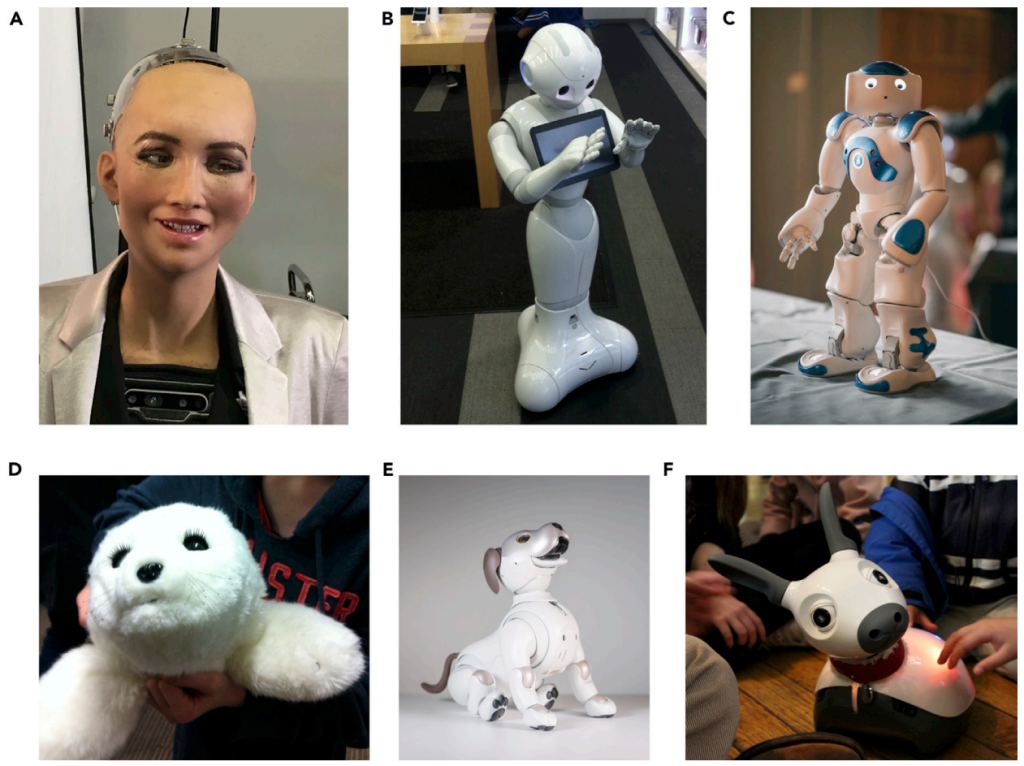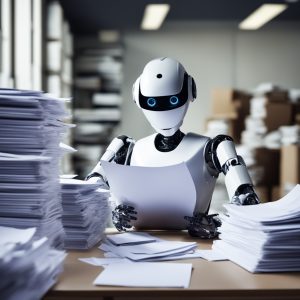The fast-paced evolution of social robots is leading to discussion on various aspects of our lives. In this article, we want to highlight the question: What effects might human-robot relationships have on our psychological well-being, and what are the risks and benefits involved?
Humans form all sorts of relationships – with each other, animals, and even inanimate objects. Each type of relationship is built on different foundations. For instance, while our connections with objects are generally one-way, our bonds with animals involve mutual benefits and emotions, often based on loyalty and affection. Human-to-human relationships are very unique, filled with complexities that can bring us immense happiness and security but also comes with challenges like disagreements, fear of loss, and other trials. Both sides, positive and negative, are crucial for personal growth, helping us develop empathy, the ability to compromise, and resilience. Yet, they can also lead to trauma, affecting our mental and physical health.
The Rise of Social Robots and Automated Systems
Enter social robots – a new area in our social landscape. These robots are not just figments of science fiction anymore. They are becoming part of our daily lives, especially in sectors like healthcare and education. For the elderly, social robots can provide companionship, reducing feelings of loneliness or do brain trainings, thus help them to increase their mental health on a daily basis. For people facing battling mental health issues, robots offer a supportive presence that can guide them towards recovery. In schools, social robots are being used to enhance learning, helping children improve in areas where they’re struggling and encouraging them in their strengths. Social robots might be a new entity where people create a relation with, being different than the three above mentioned categories. Highest attachment so far can be seen with robots that are actually visible and not only being heard. In the picture below a broad variety of social robots is shown.

generation (Sony Corporation), (F) MiRo-e (Consequential Robotics)
The Unseen Risks: When Technology Meets Human Emotion
But it’s not all positive. As with any technology, there are risks. We have already seen how smartphones can affect our social lives, leading to issues like reduced attention spans and dependence on digital devices. Studies from the Harvard Universty have shown that technology is reaching the reward system in the brain and thus increasing the likability of an addiction. Moreover, the impact on children’s social development is of particular concern, highlighting the unfavorable effects observed with smartphones. For example, a study posted in the International Journal of Social Robotics has indicated a preference among children for robots mimicking pets over real animals, suggesting a future where social robots might be chosen over human friendships. This shift could potentially impair the emotional intelligence of the upcoming generation.
Besides the negative impacts on attention and emotional intelligence, there are also concerns that human-robot relationships could further deteriorate our psychological well-being by promoting anti-social behavior and emotional instability. While robotics and the development of language models do show hope in supporting companionship and aiding loneliness, issues regarding technological dependency have also surfaced. For instance, social media platforms have initially presented a more accessible way of connecting with friends and family. At the same time, studies show that these benefits are shadowed by the lack of fulfillment people experience during these interactions. As a result, relying on such platforms may hinder the creation of meaningful connections, making relationships more and more superficial. These struggles could be exasperated by the rise of robotics and development of language models. One example highlighting this issue is the automation of customer service. As cashiers are being automated into check out machines and service assistants are replaced by robots, people are starting to become progressively reliant on technology for social interactions. This makes one question whether the interaction with automated systems might weaken social skills and make interactions more challenging, particularly for those already struggling with social anxiety, instead of aiding in mental health management. The scenario above is just one instance of how the dependency on technology could damage well-being given it may nurture isolation and resilience towards human interactions. One more sensitive example is the application of AI in psychological assistance and counseling. Although using such technologies might make mental health services more accessible since people could request round-the-clock unlimited therapy, there are also several challenges. As language models are becoming better at mimicking human behavior and expression, ethical concerns regarding the reliance on these technologies appear. For instance, AI systems may output distinct signs of affection and empathy which could be misleading and manipulative to some extent since they would not be true. The model itself could not empathize and experience the feeling as the individual does, making the whole interaction ingenuine. This would also question the quality of care offered as the model could not fully grasp the complexities of certain psychological issues and how they could differ depending on cultural nuance and personal history. Lastly, it is difficult to tell how aware people would be of these issues, especially when being in a vulnerable state. This brings up ethical worries about the likelihood of patients developing emotional dependencies on these automated systems. And if that would be the case, would the implementation of AI systems and robotics ultimately aid well-being or would the interaction be so deceiving that it could result in further emotional instability?
Is All Hope Lost?
No, not all hope is to be lost. At least not yet. While there are many concerns surrounding human-robot interactions and its future, there is even more initiative to help address them. Many articles looking at this issue broadcast a very extremist approach. Either fully automate a process or don’t use the technology at all. However, as with many issues, balance is key. In the context of automated systems for companionship and education, certain restrictions could be implemented. For instance, instead of fully replacing professors, robot assistance could be used to gain further insights on individual struggles. This feedback could be used by the educational staff to offer more personalized education for their students. Furthermore, it is also important to acknowledge when robotics is truly beneficial and limit its implementation to specific purposes. For example, is selling a robot dog actually necessary when there are plenty of loving animals out there that need our help already? Hopefully, the answer will remain obvious. In the case of emotional dependencies to chat-bots and AI therapists, human-robot collaboration could be a solution. For example, using robotics to conduct the primary assessments and then triage each patient to their best fitted professional might support accessibility while trying to offer a genuine empathetic service. Therefore, finding the right balance and purpose for robotics in our lives, using them to enhance rather than replace human interactions and services, could lead to innovative solutions that respect both our technological capabilities and our human values.

Navigating the Future
Concerns appear for the mental well-being of future generations as we integrate social robots more deeply into our lives. Looking forward, we advocate for the responsible use of social robots, emphasizing that their role should be limited and usually not serve as companions. For seniors though who have already developed their social capabilities and can clearly differentiate between a robot and a human, having a robot companion could still enhance their quality of life, even in solitude. These technologies have the potential to offer significant benefits, from improving mental health and enable connections to reduce loneliness, to enhancing educational experiences. However, we strongly believe in the importance of oversight, especially for the young generation. This demographic is still developing critical social and emotional skills, learning how to navigate complex situations and relationships. A robot companion, programmed to comply with a child’s desires without offering contradiction or presenting challenges, might hinder this essential growth. Disagreements, setting boundaries, and experiencing a range of opinions are crucial for personal development and gaining social competencies. Looking forward, it is possible that robots will become commonplace in our social interactions, yet it is important that we maintain the ability to distinguish between human-robot and human-human interactions. This distinction will enable us to derive the best of both worlds, leveraging the advantages of technology without compromising our social abilities.


